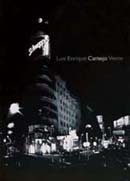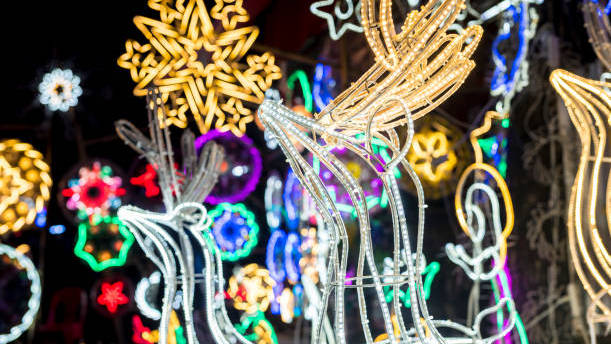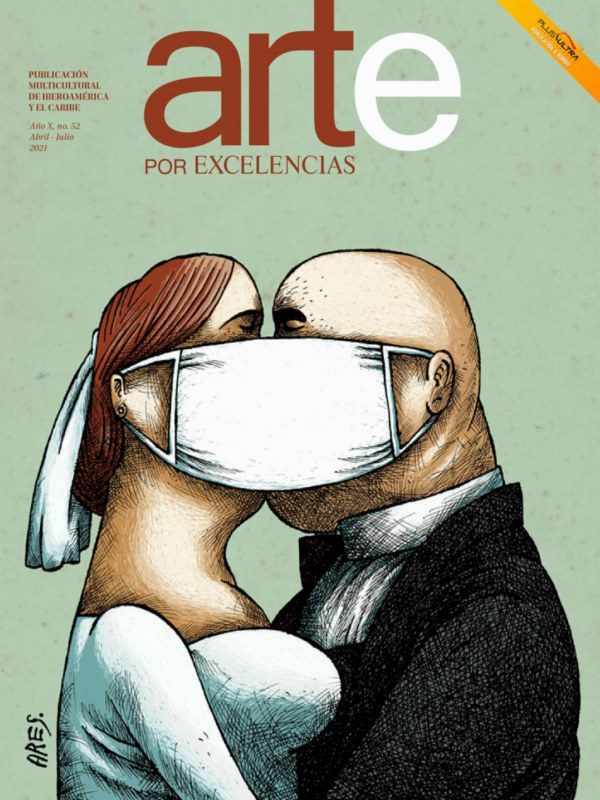A city vision, in which the light draws the full scope of the night, is the image that serves as backdrop for this book entitled “Luis Enrique Camejo Vento.” The nature of this proposal and the concept it renders in are the very first signals we pick up to reach out to that city that time and again turns into Camejo’s painting. The monochromatic view of Madrid splayed on the cover singles out the desire to talk to and relate with the Spanish burg where PrinterMan Industrias Graficas stands –the printing location in 2008 of the book that had been in the works then. This volume we’re looking at from the cover recreates a peculiar way of shedding light on darkness, that particular way that white brushstrokes achieve as they pass through the glass walls, of writing neon signs on the air and the restless glimmering of the city lights, suggesting motions and –also- a closer approach to what’s going on in the streets; the many exchanges that come to pass on the pavement. Thus, the book takes us by the hand of Camejo on a grand tour around the urban landscape, and riding on that lighting course, a text by Antonio Eligio Fernandez (Tonel) picks us up for detailed glimpses and reflections into the innards of the process itself, its evolvement and innermost motivations. In consequence, Tonel’s analysis –“Cites that Are Cities: Painting and Urban Space in the Work of Luis Enrique Camejo”- is indeed a singular tour that makes Havana an essential context where everything starts for the artist, a definitive city and yet aloof from the tourist stereotypes that give it a name. A Havana –as I could find out later on a step-by-step basis- “built” from its dwellers’ own crossroads, once and many times at a time: in atmospheres, space senses, time. After this early going has been channeled, Tonel takes notice of the earnestness –and the commitment- Camejo fulfills in his painting, going into the details of what he calls the “ritual” of indispensable actions and taking notice on what’s going down in himself as “manual-looking actions (…) that measure up to the intellectual scope of the painting” and to what the artistic guild defines as trade. This respectful and inclusive vision provided by Tonel, in keeping with the different expressive means of contemporary arts, makes a stop even at the meaningfulness of the place where the paintings of Luis Enrique Camejo come into being, but above all, it sheds abundant light on the ins and out of the process construed as a whole. His conversational narration allows us to make out what he discerns as the artist’s priciest proceedings, some of them whose origins –based on the assessment and the practical experience, too- goes over the watercolor technical principles, excelled in practice by Camejo’s mastery of other means and their basics. What Tonel underscores is a very meaningful detail of Camejo’s painting, responsible for the qualities that light reaches in his artworks and also for the transparencies, the contrasts, the wash drawings. It’s the key to how he manages to paint the fickle ascents –and descents- to how he captures the vibes of the hot summer days, the torrential downpours, the tropical murkiness of the winters, the shades of impatience, the wait, the running of the two of them. The 145 color images in the book turns it into a sort of gallery, thus wrapping up a span of time that stretches out from 2005 to date. Such a volume of Camejo artworks favors, on the one hand, the study of a work that zeroes in on urban landscape or city themes –either way- and on the other hand, it kindles contemplative delight. Even though the book is no doubt balanced, the presentation of the works lets the possible chronological registry fall by the wayside and homes in on a peculiar chromatic order marked by the title pages and the color details on the page upper corners. The tonalities set the beat, the piece successions, even though the swaying intensity of a particular tone is not highlighted. The sober design by Eduardo Molto conveys what the artist himself thought up: a feeling of motion that even let the reader be a part of it in this chromatic journey the different segments embark on. The grey hue kicks off what we may call the graphic chapters, and that’s clearly seen in the piece entitled “Crossing 26th”. It puts us in the middle of the avenue, on the trail of moving cars and their stops at the pump stations. There come several waiting moments before crossing the road under the heavy rain, the cohabitation in the street of both commuters and pedestrians. On that same course, a few views of the Malecon and the different Havana tunnels pop up. The cars –their ghostly prominence actually strikes the attention- make way for city slickers. The progression of the Dream series and other untitled pieces give full account of this. The city seen through the eyes of Luis Enrique Camejo can be green and shows off its progress toward turquoise in shades that inspire a weird sympathy. The glamour lights up the shop windows and the light reaches in to the meeting grounds where some vague figures flaunt their solvency, while others show their disappointment. An odd gleam is tacked on each and every daytime trip, as well as on the discreet workings of the night. The dark blue provides an episode of its own. In it, he makes a similar description of a street view from inside a gallery and the Panama series. No matter the highlights on any other part of this Camejo city, that are cities, as Tonel puts it, a concept that goes way beyond it as the statement of a one-and-only space because it comes up to us as a larger-than-life fact, as something more than just a mere compilation of places. The last chapter of this singular book, following 154 pages of continuous displacements, is nearly two dozen watercolors and a small sample of pieces dealing with his railroads. As a conclusion, they stress that gift for contrasting and narrating in the value of Camejo, either with oil or acrylics, or the combination of the two of them and other techniques. The watercolors let us peek at the flow of his cities of “water and smoke,” speaking to us from the least permanent things, the fleeting traffic, the crossing. Equally important are the helplessly contextual atmospheres the artist achieves when those streets of ours have leaned to apprehension, routes of the contradictory and the convulsiveness of these times. The book “Luis Enrique Camejo Vento” manages to convey, in a crystal-clear fashion, a coherent artistic personality and, as we speak, is a valuable reference on the artist. In a different sense, it lets a timely reflection on painting flow into the watercourse of the Cuban arts, banking on a trip that the book itself and each city made out in it provide, let alone the yarn-spinning stories they tell us. Caridad Blanco de la Cruz (Cuba) Art Critic cblanco@cubarte.cult.cu

Publicaciones relacionadas

















